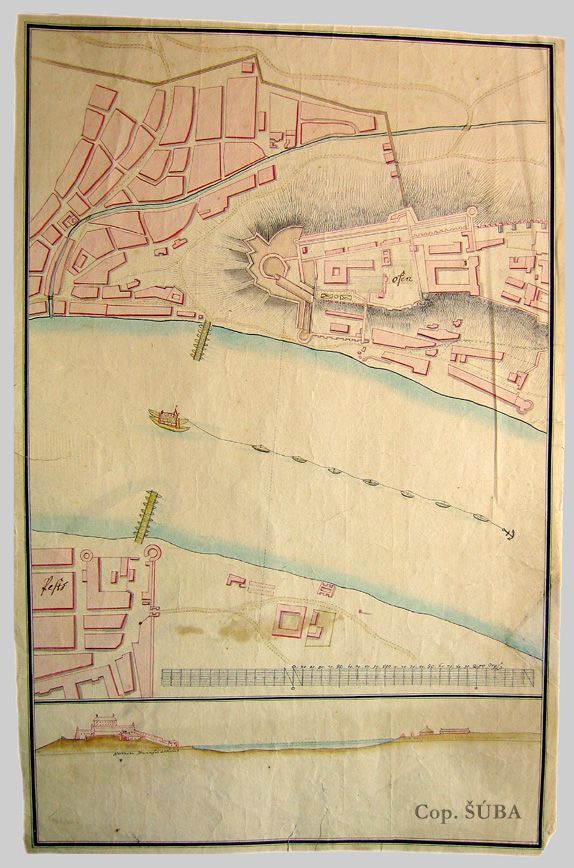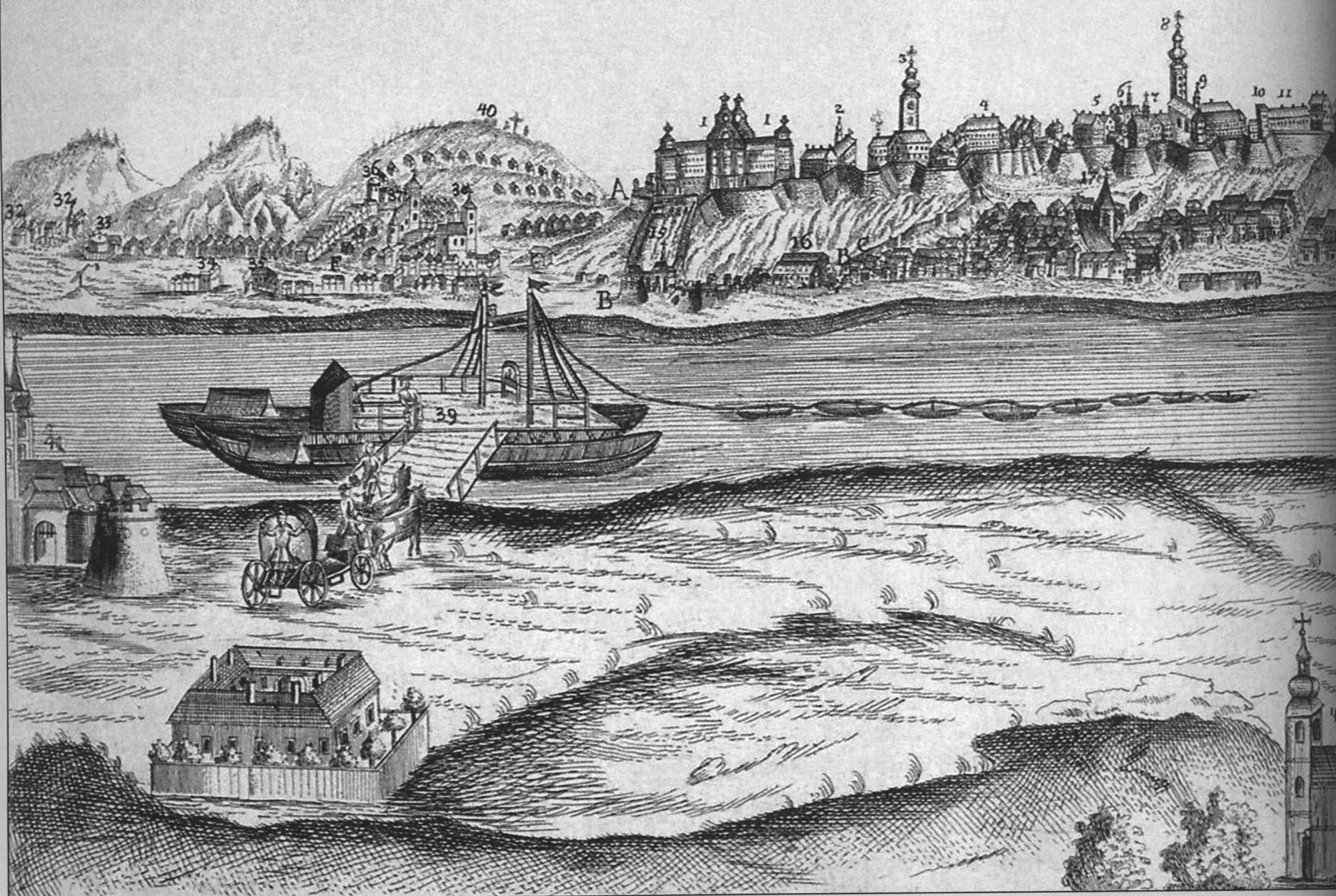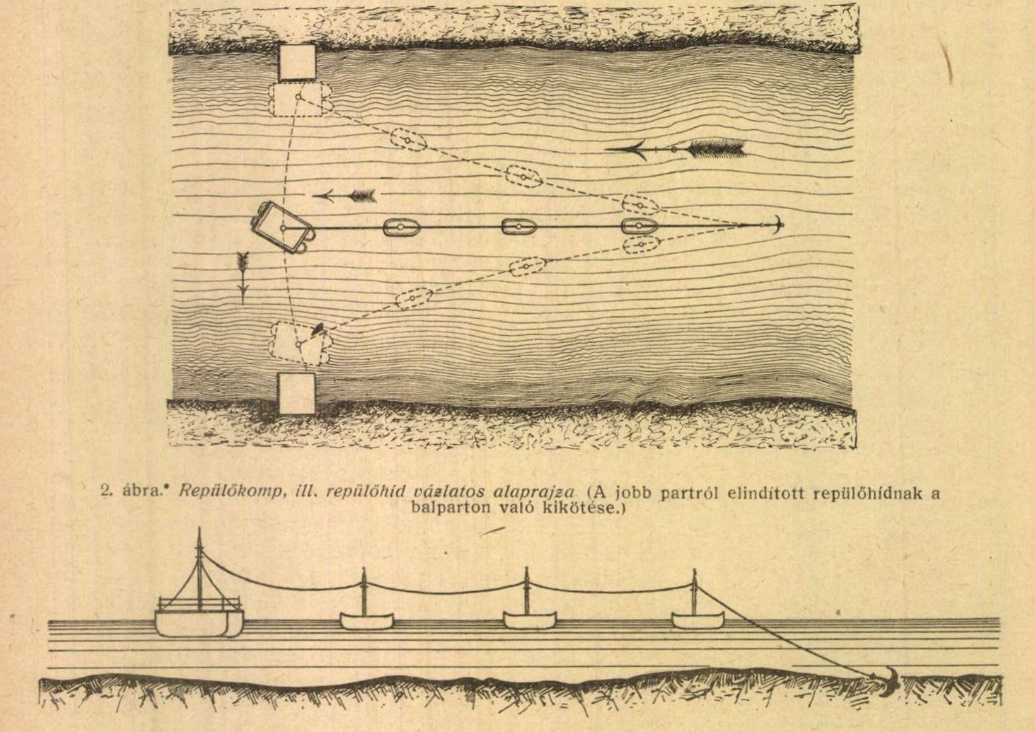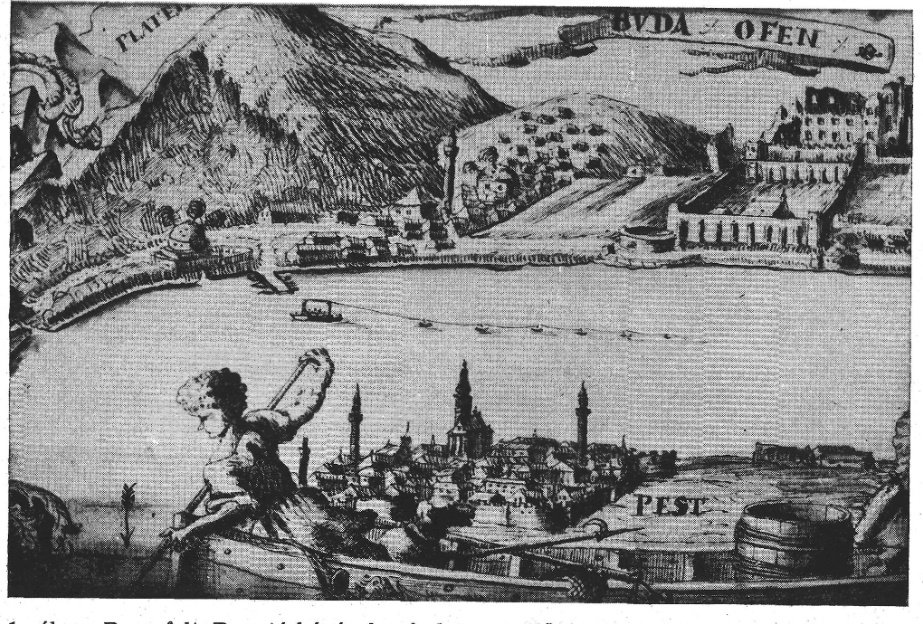The reaction ferry is a type of ferry. It differs from traditional ferries in that it uses the power of the river to cross. The device on which passengers and carriages cross is a double-hulled, or catamaran-type raft called a bridge. A mast was placed on both sides of this bridge, which was held together by a connecting beam above. The rudder was placed at the rear of the bridge. The trick in the construction is that a long rope or chain was run from the proper point of the bridge through the cross beam held by the two masts, which was anchored much higher, upstream, in the middle of the river. The chain or rope was held above the water by tiny rafts all the way to the anchor point. In this way, the structure actually worked like a laid down pendulum. If the bridge was turned to the right angle with the rudder, then the drifting force of the river moved the bridge, of course the rudder setting had to be changed in the middle of the river, and then the reaction ferry crossed from one bank to the other completely using the power of the river, no human or animal assistance was needed force to move it.
The Pest-Buda reaction ferry was probably already in operation in 1696-1697, and in 1701 János Lechner built a new structure for the cities. The ferry first operated near today's Erzsébet Bridge, later roughly on the site of today's Chain Bridge. It could transport 300 people and 3-4 horse-drawn carriages at the same time on one trip, so it was particularly large. In Sámuel Mikovinyi's drawing, it is clear that the structure arrived at separate piers on both shores, and it was possible to get ashore through these piers.

Sámuel Mikovinyi's drawing of the reaction ferry (Source: OSZK)
Pest and Buda received the toll revenue from the reaction ferry in 1703, but not the city officials collected it, they leased the structure. In 1716, János Lehner received it with an annual payment of 3,000 HUF. So the lessee gave a fixed amount to the cities, and then he collected the customs. Not everyone paid, the widows of city officials and clerks, nobles, doctors, pharmacists, and priests were exempted, and certain products were also exempted from customs duties, such as brewing supplies, wine intended for city taverns, and firewood.
It is fair to ask that if there was already a pontoon bridge here in Turkish times, why was a structure with a much smaller capacity sufficient for 80 years after the Turks were expelled? The reason for this is that the Turks also built the bridge mostly for military reasons, not because of heavy traffic. In the 18th century, securing the crossing between Buda and Pest was not so important militarily, since the national border was quite far from the cities. And the traffic between the two cities was not too brisk to make the construction of a pontoon bridge worthwhile. In 1764, the tenants received the right to operate for 10,640 HUF, while according to data nearly 30 years later, the construction cost of the pontoon bridge at that time was more than 20,000 HUF, while the construction cost of the reaction ferry was much lower, a third of that of a pontoon bridge.

The view of the reaction ferry in the 1735 engraving by János Fülöp Binder (Wikipedia)
The reaction ferry was finally replaced at the request of the authorities by the two cities 255 years ago, when, due to the trip of Archduke Albert in 1767, the Board of Governors ordered the shipping office to erect a pontoon bridge. The reaction ferry was replaced in 1767 by a pontoon bridge, which created a more permanent connection between the two coasts. However, the reaction ferry was not forgotten and even returned.
The pontoon bridge alone could not handle the expected additional traffic of the parliament convened in Buda in 1790, so that year a reaction ferry was again established between Pest and Buda. It was a temporary solution to relieve the load on the pontoon bridge. The cost of building the ferry was 6,255 HUF, so we can see how much less it cost than a pontoon bridge.
Later, a plan arose to build a reaction ferry not between Pest and Buda, but between Újpest and Óbuda. In 1863-1864, the young but ever-growing population of Újpest initiated the construction of a reaction ferry there, which would have made it easier for the locals to travel.

The operation of the reaction ferry according to Ede Lósy Schmidt (Ede Lósy Schmidt: Additions to the history of bridge construction in Hungary. Technika, 1923. Issue No. 5–6)
However, this plan was not realised at the time, probably partly due to the opposition of the Chain Bridge Company. The company that built and operated the Chain Bridge had a privilege in terms of crossings within the borders of Pest and Buda, and even though the planned reaction ferry was just outside these borders, it would have disturbed the business. It is probably no coincidence that it appeared in the press at that time, in 1864, and this is where the misconception first entered the public consciousness that the Chain Bridge Company was granted exclusive permission to build bridges in a mile distance on the river (the Vienna mile is 7,585.92 metres), i.e., the planned reaction ferry already fell within this one-mile distance. But the special permission was only up to the borders of Pest and Buda.
Even in the 19th century, the reaction ferry was not an outdated device, as shown by the fact that the last reaction ferry in Hungary served between Tahi and Tóthfalu until 1913.
Cover photo: Detail of Rosenfelt's Danube map with the reaction ferry and the Buda harbour (Published by: Endre Morvay: The Pest-Buda reaction ferry, Studies from the past of Budapest 19. [1972])




































Hozzászólások
Log in or register to comment!
Login Registration